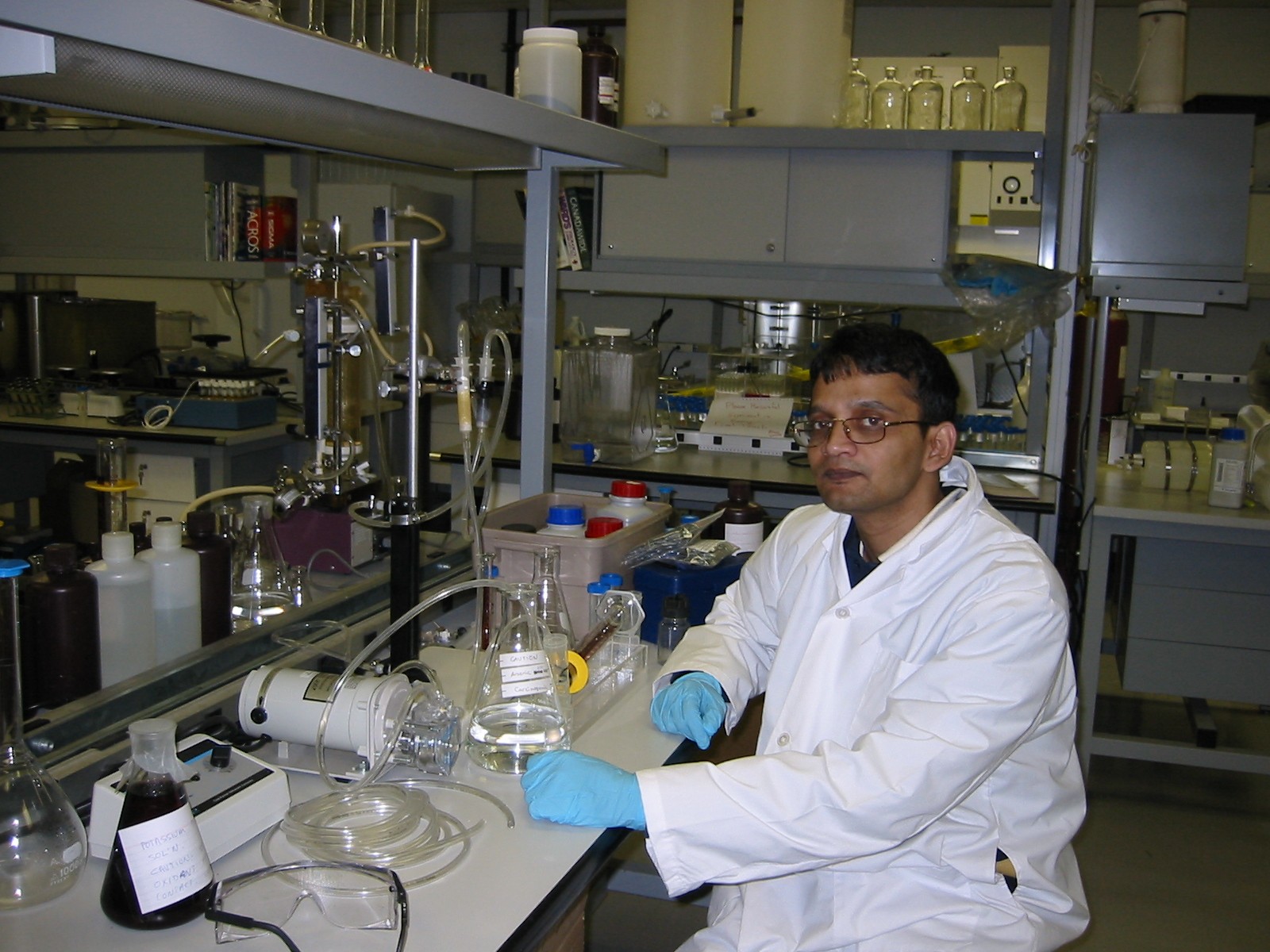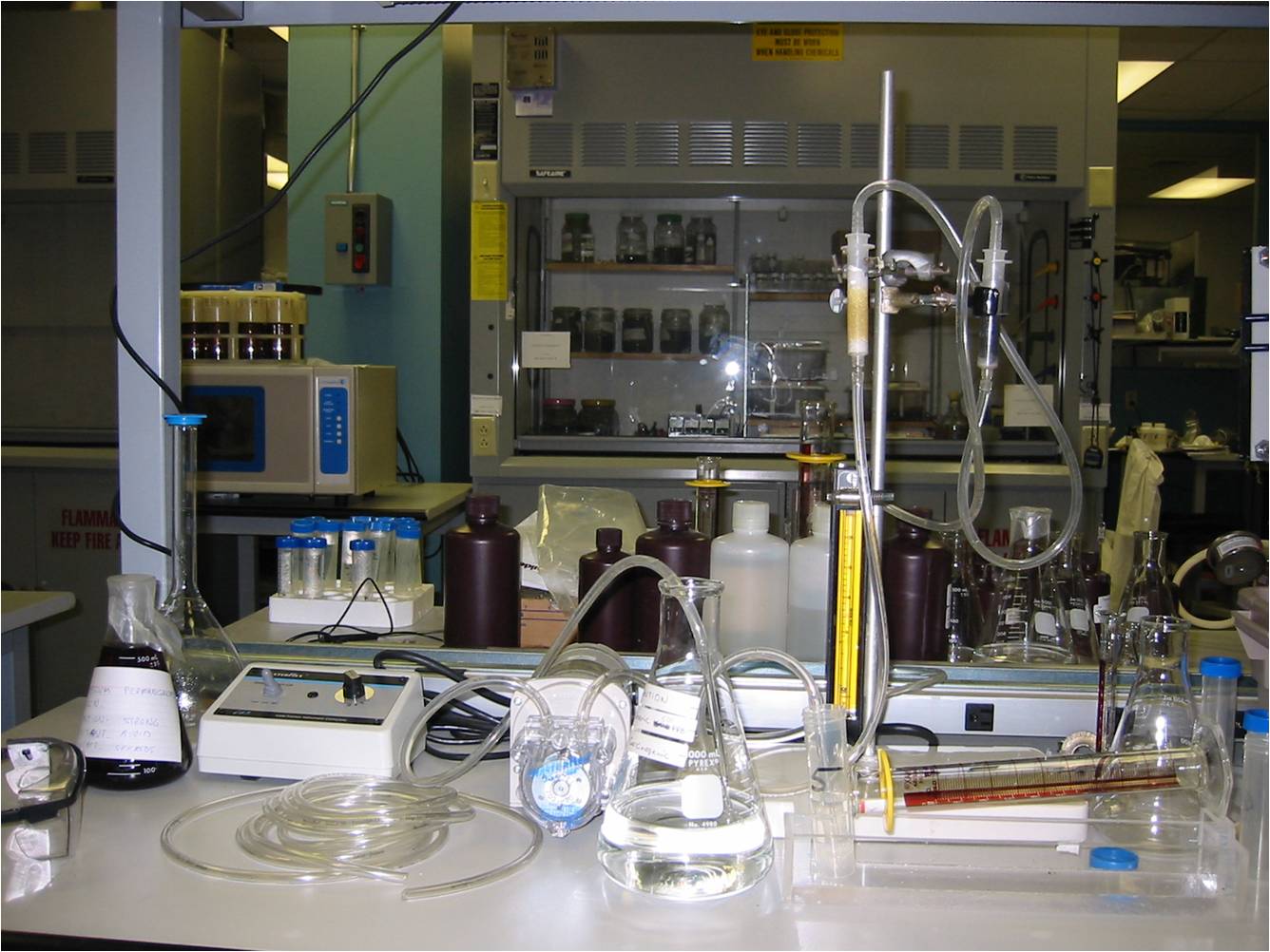


We have investigated the problem arising from the coexistence of arsenic and organic substances principally in the US Superfund Sites and elsewhere. Dissolved organic ions are strong competitors to arsenates, and because of their large size and slow kinetics, arsenic removal becomes problematic. Optimum conditions for regeneration of macroporous media were determined. Waste handling processes were developed to treat and reuse spent regeneration solutions as well as to detoxify the solid waste containing arsenic and organic matter. A reagent based technology for the treatment of spent regeneration solutions by Ca(OH)2 and MgCl2 (or MgSO4) was devised. Based on the results, appropriate decontamination schemes were developed for groundwater contaminated with arsenic and organic impurities.

The treatment process consists of an oxidizing filter followed by
an ion exchange column. The effect of pH, arsenate concentration and
filtration velocity were examined using simulated groundwater.
The investigation procedure was as follows. The investigation was
carried out in the laboratory on a fixed unit incorporating dynamic
columns with Filox-R and the anionic-exchange media Purolite A-300
(chloride ion form) serving as oxidizing and ion-exchanging filters
respectively. Thus, an oxidizing filter was used followed by an
anion filtration system.
Raw water was pumped from a three-liter flask and flowed downward
through the oxidizing filter. A MasterFlex L/S pump with a
controller was used. Flow rates (1 mL/min to 3 mL/min) were adjusted
with the speed control potentiometer as well as an additional flow
meter.

The chemical analysis of the samples was done by a colorimetric
method (Hach method) for the detection of arsenic of 0-500 ppb.
Sulfamic acid and powdered zinc react to create strong reducing
conditions in which inorganic arsenic is reduced to arsine gas (AsH3).
The arsine gas then reacts with mercuric bromide impregnated test
paper to form mixed arsenic/mercury halogenides (e.g. AsH2HgBr).
These compounds discolor the test strip depending upon the
concentration of the arsenic in the sample. The color change is from
white to yellow to tan to brown.
Most tests for arsenic, including the Hach method, rely on the
conversion of arsenic to arsine gas.
As2O3+6Zn+12HCl ð 2AsH3+6ZnCl2+3H2O
H3AsO4+4Zn+8HCl ð AsH3+4ZnCl2+4H2O
The liberated arsine gas is then reacted with a detector paper that
has been impregnated with mercuric bromide. As the reaction above
indicates, arsine gas is commonly generated by reduction with zinc
metal and hydrochloric acid. The zinc powder and all other reagents
in the Hach method were packaged in unit dose form for convenience
and to minimize handling. The mercuric bromide test paper was on the
end of a long plastic strip to eliminate the need to be exposed to
the mercuric bromide.
The strips were all photographed and digitized by a Canon Power Shot
S200 Digital Elph camera. Representative samples of influent and
effluent water were analyzed by the company Body Cote using ICP-MS
at the detection limit of 1 ppb to double check the reproducibility
of the analytical results. No difference was observed.